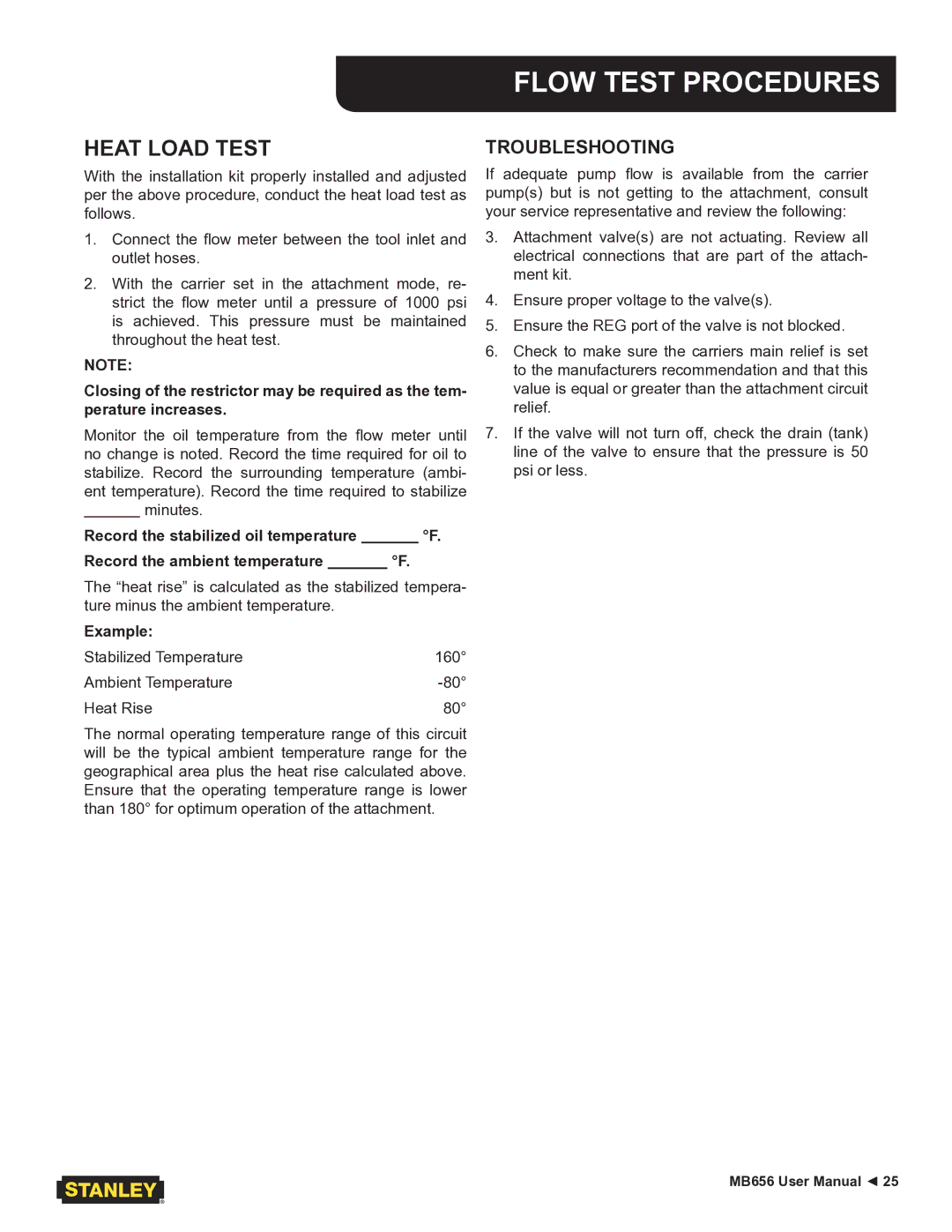
FLOW TEST PROCEDURES
HEAT LOAD TEST
With the installation kit properly installed and adjusted per the above procedure, conduct the heat load test as follows.
1.Connect the flow meter between the tool inlet and outlet hoses.
2.With the carrier set in the attachment mode, re- strict the flow meter until a pressure of 1000 psi is achieved. This pressure must be maintained throughout the heat test.
NOTE:
Closing of the restrictor may be required as the tem- perature increases.
Monitor the oil temperature from the flow meter until no change is noted. Record the time required for oil to stabilize. Record the surrounding temperature (ambi- ent temperature). Record the time required to stabilize
minutes.
Record the stabilized oil temperature |
|
| °F. | |
Record the ambient temperature |
|
| °F. | |
The “heat rise” is calculated as the stabilized tempera- ture minus the ambient temperature.
Example: |
|
Stabilized Temperature | 160° |
Ambient Temperature | |
Heat Rise | 80° |
The normal operating temperature range of this circuit will be the typical ambient temperature range for the geographical area plus the heat rise calculated above. Ensure that the operating temperature range is lower than 180° for optimum operation of the attachment.
TROUBLESHOOTING
If adequate pump flow is available from the carrier pump(s) but is not getting to the attachment, consult your service representative and review the following:
3.Attachment valve(s) are not actuating. Review all electrical connections that are part of the attach- ment kit.
4.Ensure proper voltage to the valve(s).
5.Ensure the REG port of the valve is not blocked.
6.Check to make sure the carriers main relief is set to the manufacturers recommendation and that this value is equal or greater than the attachment circuit relief.
7.If the valve will not turn off, check the drain (tank) line of the valve to ensure that the pressure is 50 psi or less.
MB656 User Manual ◄ 25
